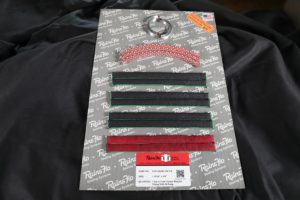In the world of industrial sealing, two heavyweights often take center stage: braided packing vs mechanical seals. Both serve the essential function of preventing leakage in pumps, valves, and other industrial equipment, but they do so in very different ways.
Each option has its own set of advantages and drawbacks, making it crucial for companies to understand the differences before making a decision. In this article, we’ll break down everything you need to know about braided packing vs mechanical seals so that you can make an informed choice for your operation.
What is Mechanical Sealing?
Mechanical seals are composed of two metal components that use the pressure from a fluid to form a seal. These components are separated by small quantities of the fluid they are sealing, which not only helps reduce friction but also keeps the seals lubricated. Because mechanical seals rely on this fluid for operation, they are designed to handle a certain amount of leakage—essentially repurposing the leakage as a cooling and lubricating agent.
Pros of Mechanical Seals:
- Self-Lubrication: The surrounding fluid serves as both a lubricant and a cooling agent, reducing wear and tear on the seal and the shaft.
- Durability: Mechanical seals are more robust compared to braided packing and can handle high-pressure environments effectively.
- Efficiency: With proper installation and maintenance, mechanical seals can provide a highly effective, long-lasting solution for industrial equipment.
Cons of Mechanical Seals:
- Cost: Mechanical seals are a premium option, with higher upfront costs due to the precision metal components required.
- Leakage: While mechanical seals manage leakage, they cannot entirely prevent it. Over time, even small leaks can pose environmental or safety hazards if not properly monitored.
- Maintenance Requirements: While not as frequent as braided packing, mechanical seals still require periodic inspection and maintenance.
What is Braided Packing?
Braided packing consists of rings of braided material, such as fibers or synthetic yarns, inserted into the stuffing box of industrial equipment. Unlike mechanical seals, braided packing is primarily designed to control leakage rather than eliminate it. Braided packing works by compressing the rings within the stuffing box, but still allows a small amount of fluid to pass through.
Pros of Braided Packing:
- Cost-Effective: One of the most appealing aspects of braided packing is its affordability. It’s made from less expensive materials than mechanical seals, making it a budget-friendly option for many industries.
- Easy to Install: Braided packing is relatively easy to install and adjust, requiring minimal technical expertise.
- Good for Low-Pressure Environments: Braided packing can perform well in low-pressure settings where constant maintenance isn’t an issue.
Cons of Braided Packing:
- Frequent Maintenance: One of the biggest drawbacks of braided packing is that it needs to be adjusted regularly, sometimes as often as daily, to maintain effectiveness.
- Shorter Lifespan: The friction generated between the packing material and the shaft means braided packing wears down faster and requires more frequent replacement.
- Higher Emissions: Because braided packing allows more leakage than mechanical seals, it can lead to higher emissions and more environmental concerns.
Braided Packing vs Mechanical Seals: Which Should You Choose?
Choosing between braided packing vs mechanical seals largely depends on the specific needs of your operation. If you’re looking for something durable, reliable, and suited for high-pressure or high-temperature environments, mechanical seals are likely your best option. However, if you need an affordable solution and are willing to handle more frequent maintenance, braided packing may be the way to go.
Consider the following factors when deciding between braided packing vs mechanical seals:
- Cost: Braided packing is cheaper upfront, but the frequent need for replacement and adjustment may lead to higher long-term costs.
- Maintenance: Mechanical seals require less frequent maintenance but are more expensive to replace when they do fail. Braided packing is easy to replace but requires constant monitoring.
- Leakage: If minimizing leakage is a priority, mechanical seals are generally more effective. Braided packing allows more fluid to pass through, which could increase emissions and safety concerns.
Looking for a Better Solution?
The debate between braided packing vs mechanical seals ends with RainsFlo. For industries prioritizing both cost and durability, RainsFlo packing offers a balanced solution for industrial sealing. It combines the affordability of braided packing with superior durability, thanks to its patented self-lubricating design. As pressure increases, RainsFlo releases lubrication, extending its lifespan and minimizing wear on the shaft.
Unlike traditional packing that mitigates leakage, RainsFlo prevents it entirely, making it ideal for reducing emissions and environmental impact. With its ability to adapt to imperfections in the pump, it requires fewer adjustments over time, providing a cost-effective, long-lasting alternative to both mechanical seals and braided packing.
 RainsFlo
RainsFlo